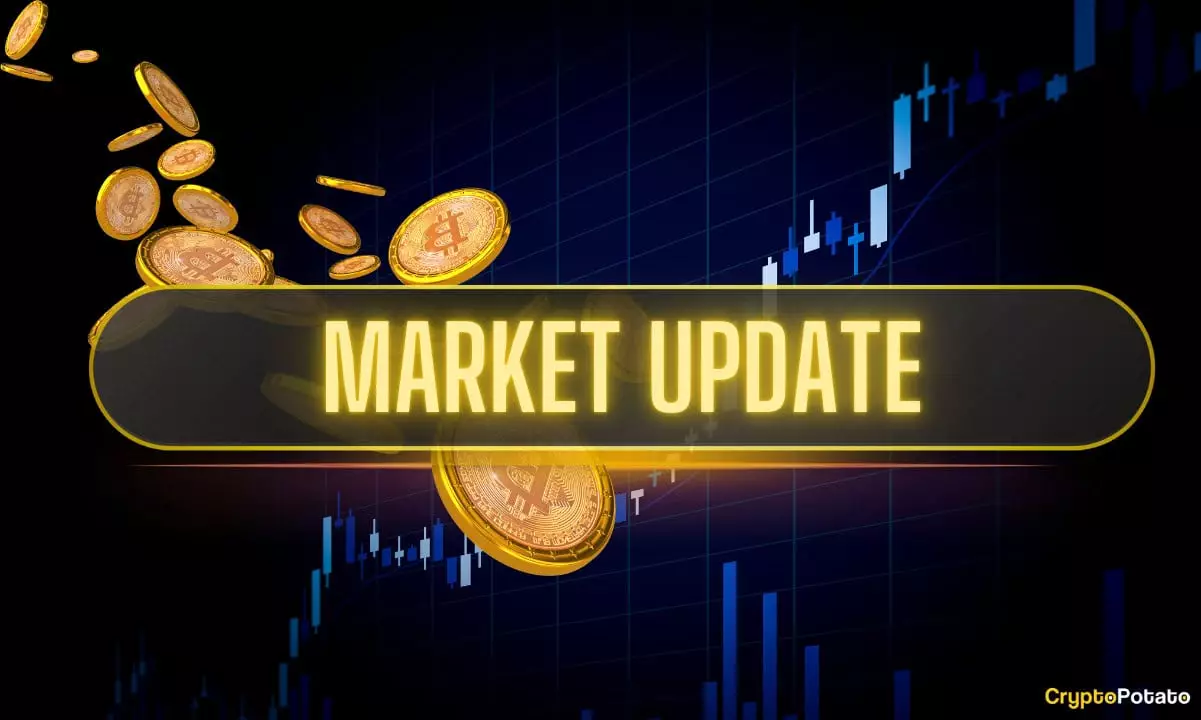At the start of the week, the cryptocurrency market mirrored the sluggish political climate in Washington, D.C. Bitcoin was lounging comfortably around the $104,000 mark, having narrowly avoided a fall below $100,000 during the previous week. Despite the calm aura, the impending political drama suggested substantial volatility lurking just around the corner. The dynamics were ripe for a shake-up, one that didn’t take long to manifest.
As the week progressed, the turbulent soap opera unfolding between U.S. President Joe Biden and billionaire entrepreneur Elon Musk escalated into a spectacle that many would describe as Shakespearean. This battle between influential figures sent shockwaves through various financial markets, including cryptocurrency. Suddenly, what might have been a week of quiet accumulation turned into a swirling vortex of uncertainty.
The Musk-Biden Saga: A Disruption of Epic Proportions
The confrontation between Musk and President Biden might seem trivial on the surface, but the impact was significant. Musk, through his platform of choice—social media—made dubious claims about the President’s past associations, linking him to infamous figures like Jeffrey Epstein. In retaliation, Biden hinted at putting a damper on Musk’s government contracts. Such grandstanding isn’t merely political posturing; it fuels a sense of chaos that unnerves investors.
Various blockchain projects felt the brunt of this fallout. Bitcoin’s inability to maintain momentum at the $106,500 resistance came as no surprise. The wild fluctuations in sentiment led to large sell-offs, including a drop to a drastically reduced price of $100,400. Bitcoin’s narrative was thus twisted; it transitioned from a beacon of hope to yet another casualty in the battleground of ego and strategy.
Market Volatility: The Ripple Effect
To paint a holistic picture of the situation, one must examine the broader cryptocurrency landscape. While Bitcoin appeared to recover slightly, pulling itself back to around $104,000, the decline was stark. Other cryptocurrencies like Dogecoin, Shiba Inu, and others exhibited more pronounced setbacks, with loss percentages reaching into double digits. This cascading effect was illustrative of a market gripped by fear.
The market capitalization plummeted to $3.365 trillion, shedding billions as investors scrambled to reassess their positions. Bitcoin’s dominance stood at 61.4%, a critical threshold for cryptocurrency enthusiasts who watch these statistics like hawks. The fear-inducing atmosphere was palpable, and while decentralized finance remains a popular space for many, the tumultuous backdrop raised questions about the robustness of public faith in cryptocurrencies.
A Glimmer of Stability: Institutional Confidence Persists
Amid this chaos, however, there’s a paradox: the steady stream of Bitcoin leaving centralized exchanges. Over 22,500 BTC exited in just a single day, an impressive figure reflecting a shift toward self-custody and a sign that savvy investors may be betting on long-term value rather than short-term price movements. The mass exodus from exchanges could be interpreted as an endorsement of Bitcoin’s foundational ethos—self-sovereignty and security in a landscape riddled with uncertainty.
Moreover, critical indicators pointed towards a looming opportunity. The Bitcoin Hash Ribbons Indicator has signaled a “buy the dip” moment, indicating potential recovery lies ahead. Despite short-term losses, this powerful metric suggests that Bitcoin could be on the cusp of new gains—if historical patterns hold.
The Big Players Are Not Sitting Idle
Big players in the cryptocurrency space are not retreating—rather, they are actively positioning themselves for future gains. Robinhood’s recent acquisition of Bitstamp for $200 million is a testament to the pursuit of opportunities in Europe’s nascent cryptocurrency market. The news heralds a newfound ambition from established platforms to bolster their legacies while expanding their influence.
Furthermore, one of the largest corporate holders of Bitcoin has announced significant plans to raise additional capital. Following modest acquisitions earlier in the week, they are pivoting toward an IPO aimed at raising up to $1 billion for further Bitcoin investments. Such moves symbolize a vote of confidence in the long-term value of Bitcoin, contradicting the immediate turmoil reflected in price fluctuations.
Amidst the Chaos, Undying Optimism
The current landscape may be overshadowed by dueling powerhouses and unpredictable market shifts, but amid this chaos is an underlying optimism manifested in both institutional investment and grassroots support. While skeptics may deem the cryptocurrency realm as volatile and risky, one cannot overlook the profound changes our economy is undergoing.
If anything is clear, it’s that this is not merely a phase but an evolutionary step toward an innovative financial paradigm. The tussles between prominent figures like Biden and Musk serve to remind us that while markets oscillate, the underlying technology and the ideas that birthed them are resilient and persistent in the face of adversity.
In these trying times, it becomes essential to scrutinize the noise, decode the drama, and remain focused on the long-term vision—one that sees cryptocurrency not merely as a speculative asset class but as a revolutionary force in socio-economic landscapes.

